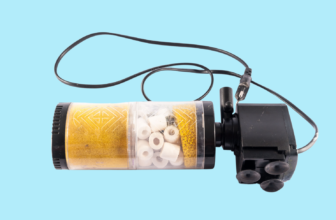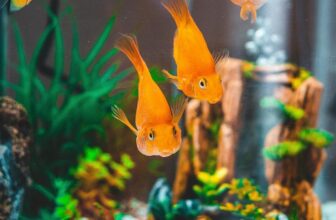
When it comes to selecting the perfect fish food for vibrant health and color, you must consider various factors that influence your fish's well-being. From understanding their specific nutritional requirements to choosing high-quality ingredients, every decision plays a vital role in enhancing their overall vibrancy. By exploring how different ingredients impact their health and coloration and learning valuable tips for feeding and monitoring, you can create an optimal environment for your beloved aquatic companions. So, let's dive into the world of fish nutrition and uncover the secrets to achieving those vivid hues and robust health your fish deserve.
Understanding Fish Nutritional Needs
To understand your fish's nutritional needs, it's essential to consider their species and natural diet preferences. Different fish species have varying requirements when it comes to nutrition. For example, herbivorous fish like Goldfish thrive on plant-based foods such as algae and vegetables, while carnivorous fish like Bettas require a diet rich in protein from sources like insects or small crustaceans. By researching your fish's species-specific dietary needs, you can ensure they receive the proper nutrients to stay healthy and vibrant.
In addition to species differences, you should also take into account the size and age of your fish. Younger fish may need more protein to support their growth and development, while older fish might require a diet lower in fat to prevent obesity and related health issues. It's crucial to choose a high-quality fish food that's appropriate for your fish's age and size to promote overall well-being. Remember, a well-balanced diet is key to keeping your fish healthy and displaying their most vibrant colors.
Factors Influencing Fish Coloration
Enhancing your fish's coloration relies on various factors beyond just genetics and species-specific traits. One crucial factor is the diet you provide. Fish need a balanced diet rich in pigments like carotenoids to enhance their colors. Carotenoids are natural color enhancers found in ingredients like shrimp, krill, and spirulina. The presence of these pigments in fish food can significantly impact the vibrancy of your fish's colors.
Another factor affecting fish coloration is environmental conditions. Proper water quality, adequate lighting, and a stress-free environment can all contribute to brighter and more intense colors in your fish. Stress, caused by factors like overcrowding or poor water conditions, can dull your fish's colors over time.
Additionally, the age and health of your fish play a role in coloration. Younger and healthier fish tend to exhibit more vibrant colors compared to older or unhealthy fish. By considering these factors and providing a nutritious diet rich in color-enhancing pigments, you can help your fish achieve and maintain stunning coloration.
Selecting Quality Ingredients for Health
When considering the health of your fish, prioritizing quality ingredients in their diet is crucial. Opting for fish foods that contain high-quality proteins, essential vitamins, and minerals can significantly impact the overall well-being of your aquatic pets.
Look for ingredients such as fish meal, shrimp meal, and algae, which provide a rich source of nutrients necessary for healthy growth and vibrant coloration in your fish.
Avoid fish foods that list fillers like wheat, soy, or corn as primary ingredients, as these offer little nutritional value to your fish and can lead to health issues over time. Instead, choose products that clearly state the use of whole ingredients and avoid artificial additives or preservatives.
Quality ingredients not only support your fish's immune system and digestive health but also contribute to enhanced color pigmentation, making your fish more visually appealing.
Tips for Feeding and Monitoring
Consider incorporating a feeding schedule to ensure consistency and monitoring your fish's appetite and behavior to gauge their health and nutritional needs effectively. By following a set feeding routine, you can prevent overfeeding or underfeeding, promoting better digestion and overall health for your fish. Observing your fish during feeding times allows you to assess if they're eating eagerly, showing signs of distress, or displaying abnormal behavior that may indicate health issues.
To enhance monitoring, keep an eye on how much food your fish consumes within a few minutes. Uneaten food can lead to water quality problems. Adjust the amount accordingly to prevent any waste buildup. Additionally, try offering a variety of foods to ensure a balanced diet and cater to different nutritional requirements.
Regularly checking your fish for changes in color, weight, or growth can help you adapt their diet to meet evolving needs. Remember, a proactive approach to feeding and monitoring will contribute to the vibrancy and well-being of your aquatic companions.




